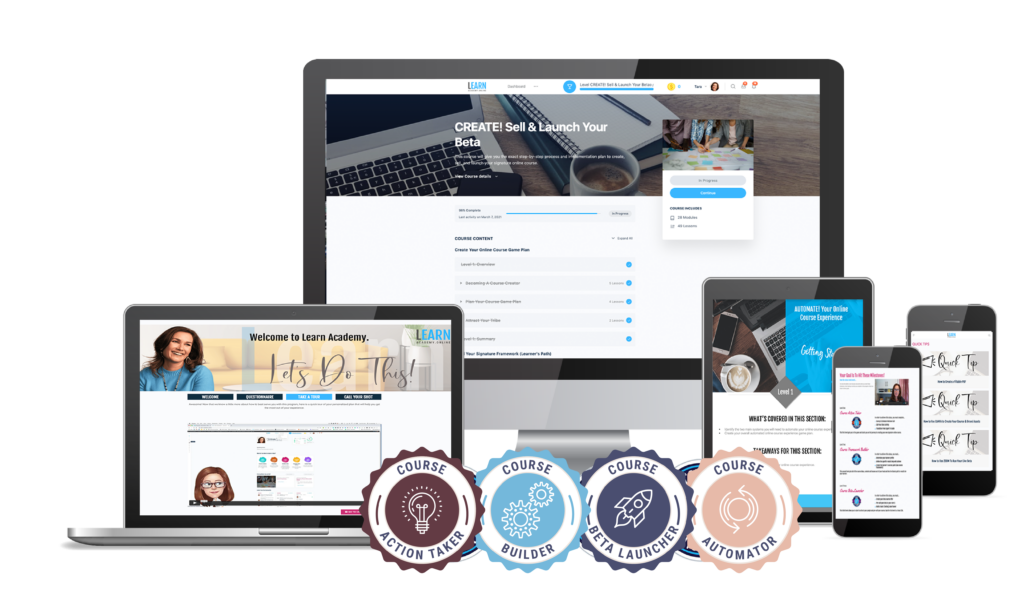As an entrepreneur looking to scale your business, you’ve probably felt overwhelmed by the tech side of things. Maybe you’re not tech-savvy, or perhaps you’re just not sure where to start. The good news? You don’t need to be a tech genius to transform your business with the right tools. In this post, we’ll dive into practical, actionable steps to leverage tech automation, making your business more efficient and freeing up your time to focus on what truly matters.
Why Tech Automation Matters
Incorporating technology and automation into your business can change everything. It maximizes your ability to serve customers without consuming all your time. Yet, many entrepreneurs hesitate, often held back by the belief that tech is too complicated or that they lack the skills needed. The truth? Automation can be simple and accessible, and it’s all about starting small and building up.
The Key to Successful Tech Integration
The biggest mistake many business owners make is jumping straight into tech without a clear plan. It’s essential to start with your business requirements. Here’s how you can map it out:
- Identify Your Needs: Begin by listing the repetitive tasks you perform daily. Whether it’s sending emails, scheduling meetings, or managing customer onboarding, write down everything that takes up your time.
- Start on Paper: Before diving into software, sketch out your processes. What does your customer journey look like? What parts of your business could be automated to save time and enhance customer interactions
- Choose the Right Tools: Only after you’ve mapped out your needs should you begin exploring tech options. The right tools will align with your business requirements and make life easier—not more complicated.
Actionable Tips to Get Started with Tech Automation
- Automate Your Email Communication: If you’re still sending individual emails to customers from your personal or business account, it’s time for a change. Email automation tools like Active Campaign allow you to send personalized messages to many customers at once. This not only saves time but also ensures consistent communication.
Example: Instead of manually sending a welcome email to each new customer, create a template that automatically goes out when someone signs up or makes a purchase. This small shift can save you hours each week. - Simplify Scheduling: Tired of the back-and-forth emails to find a meeting time that works? Tools like Calendly or Google Calendar Scheduling let customers book appointments based on your availability. No more endless email chains—just a simple link, and the customer picks a time that suits them.
Example: Set up your calendar so that customers can only book during your available slots. Integrate it with Zoom or Google Meet for seamless meeting scheduling, and send automated reminders to ensure no one forgets. - Map Out Your Tech Stack: When planning your tech integration, think of your tech stack as a set of tools that work together to support your business needs. Start with the basics—like email automation and scheduling—then gradually add more as your needs grow.
Example: If your main goal is to enhance customer experience, you might prioritize creating a core delivery platform that helps manage customer interactions and data. For expanding sales and marketing, To meet multiple goals with a small tech stack, consider an all-in-one platform like Kajabi. - Test Before You Build: Whether it’s a new website, a digital delivery platform, or a customer portal, always start with a beta test or prototype. Create mock-ups on paper or use simple tools like Canva to outline what you want before investing time and money into building the tech.
Example: Before launching a new offer, sketch out the customer journey on paper. How will customers navigate through your methodology? What touchpoints will you automate to guide them through the process? - Focus on the Experience: Ultimately, tech should enhance—not detract from—the customer experience. Use automation to add value at each step of the customer journey, whether it’s through personalized onboarding, timely follow-ups, or engaging content delivery.
Example: Implement an onboarding sequence that walks new customers through your offerings, showcases key resources, and sets the stage for their experience with your brand.
Key Takeaways
- Start Small: Don’t try to automate everything at once. Begin with one or two tools that can save you the most time.
- Keep It Simple: Your tech solutions should simplify your business, not complicate it.
- Stay Customer-Focused: Every tech addition should enhance the customer experience, making their journey smoother and more engaging.
Ready to Transform Your Business?
Tech automation doesn’t have to be overwhelming. With the right approach, you can streamline your processes, free up your time, and scale your business effortlessly. Start with these simple steps, and watch as tech becomes your new best friend in business growth. Still unsure where to start? Hop on a FREE strategy call and let’s talk about it!
Our Host
Tara Bryan is on Instagram | Facebook | Linkedin
Website is: www.Taralbryan.com
Hey, it’s your host, Tara Bryan. And I am on a mission to help more business owners learn to infinitely scale their businesses by leveraging the power of online without sacrificing the customer experience or results.
I like to geek out on all things business strategy, marketing, interactive digital and user experience. This podcast is all about what is working, lessons learned and actionable tips to create and grow a thriving online business.
Join us each week as we dive into different strategies, tactics and tips you can apply immediately to your business.
Key Topics:
- Tech Automations to help you scale
- Simple steps to integrate tech without overwhelm
- Automating everyday business tasks
Highlights
- Start small: Identify the repetitive tasks that consume time and implement simple automation tools.
- Map your customer journey before jumping into tech to ensure your tools support your business needs.
- Tech should simplify your processes, not complicate them—focus on the customer experience.






